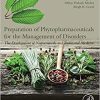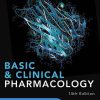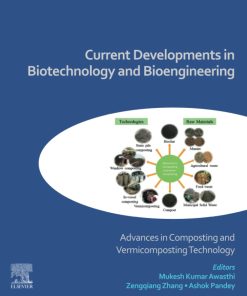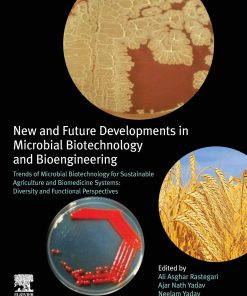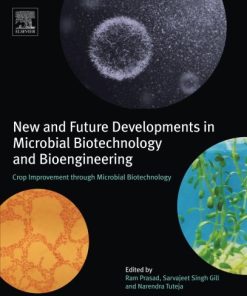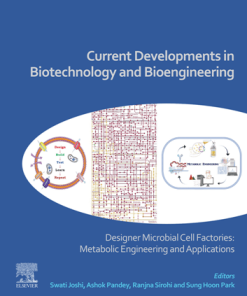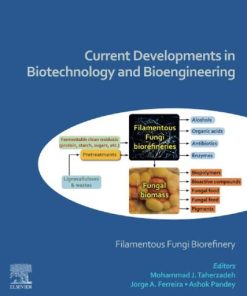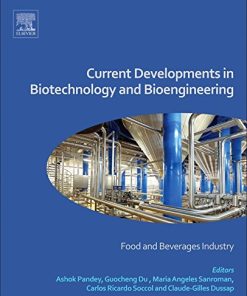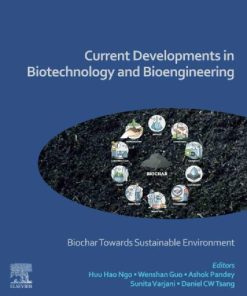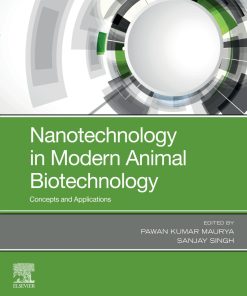(EBook PDF) Phytoconstituents and Antifungals Developments in Applied Microbiology and Biotechnology 1st edition by Awanish Kumar 032398617X 9780323986175 full chapters
$50.00 Original price was: $50.00.$25.00Current price is: $25.00.
Phytoconstituents and Antifungals: Developments in Applied Microbiology and Biotechnology 1st edition by Awanish Kumar – Ebook PDF Instant Download/DeliveryISBN: 032398617X, 9780323986175
Full download Phytoconstituents and Antifungals: Developments in Applied Microbiology and Biotechnology 1st edition after payment

Product details:
ISBN-10 : 032398617X
ISBN-13 : 9780323986175
Author: Awanish Kumar
Phytoconstituents and Antifungals covers a wide range of specific information on various phytoconstituents, their antifungal mode and the diagnosis and management of fungal infections. The book offers encouragement and empowers readers to re-embrace their knowledge of phytoconstituents and their various antifungal activities against most opportunistic pathogenic fungi as fungal diseases cause an estimated 1.5 million deaths annually and over one billion people suffer from severe fungal disease. In this complex scenario, it is now clear that global warming and accompanying climate changes have resulted in increased incidence of many fungal infections.
Phytoconstituents and Antifungals: Developments in Applied Microbiology and Biotechnology 1st Table of contents:
1. Major diseases caused by fungal infections
Introduction
2. Antifungal discovery from plant sources
Introduction
Plant selection for the discovery of antifungal
Importance of medicinal plants
Extraction and characterization of plant extract
Plant materials
Solvent selection
Techniques of extraction
Methods of antifungal susceptibility testing
Screening of antifungals through bioautographic techniques
3. Phytoconstituents as antifungals
Searching for phytochemicals from medicinal plants
Phytochemicals for antimicrobial activity
Action of phytoconstituents over microorganisms
Phytoconstituents classification
Types of terpenes
Biosynthesis of phytoconstituents
4. Plant alkaloids
Introduction
Biology and bioactivity of alkaloids
Elicitor signal transduction for plant alkaloids biosynthesis
Extraction and evaluation of plant alkaloids
Antifungal activities of alkaloids from natural sources
5. Plant phenolics
Introduction
6. Plant terpenes
Introduction
Chemical structure
Classification of terpenes
Terpenes as an antifungal agent
General properties of terpenoids
Terpenes as agents of biotransformation
Terpene’s chemistry and biosynthesis
Regulation of plant terpenoid biosynthesis
Transgenic plants and future research
Conclusion
7. Glycosides and polysaccharides
Introduction
Two important plant glycosides that behave as antifungals
Therapeutic properties of glycones (polysaccharides) and glycosides against pathogens
Mechanism of antifungal sensitivity of glycosides
8. Peptides and polypeptides
Introduction
Molecular structure composition of peptide molecules
Therapeutic role of bioactive AMPs on pathogenic fungus
Natural AFPs
Synthetic AFPs
Antifungal peptides with synergistic effects
Delivery of therapeutic peptides and polypeptides
9. Oils and resins
Introduction
Natural architecture of plant oils
Biosynthesis of major components of essential oil
Action mechanism of essential oils over fungal cells
Antifungal action against opportunistic mycoses
10. Conclusions
Summary
References
People also search for Phytoconstituents and Antifungals: Developments in Applied Microbiology and Biotechnology 1st:
phytoplex antifungal powder ingredients
phytochemicals and antioxidants
phytostan side effects
phytoplex antifungal powder
phytonutrients and antioxidants
Tags:
Phytoconstituents,Antifungals,Developments,Applied Microbiology,Biotechnology,Awanish Kumar
You may also like…
Biology and other natural sciences - Biotechnology
Biology and other natural sciences - Biotechnology
Science (General)
Biology and other natural sciences - Biotechnology
Biology and other natural sciences - Biotechnology
Technique - Food Manufacturing
Current Developments in Biotechnology and Bioengineering: Food and Beverages Industry 1st Edition
Biology and other natural sciences - Biotechnology
Engineering
Nanotechnology in Modern Animal Biotechnology: Concepts and Applications Pawan Kumar Maurya


